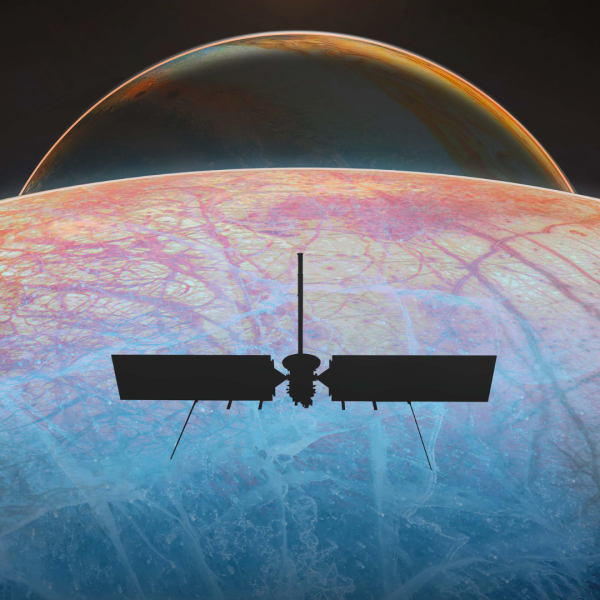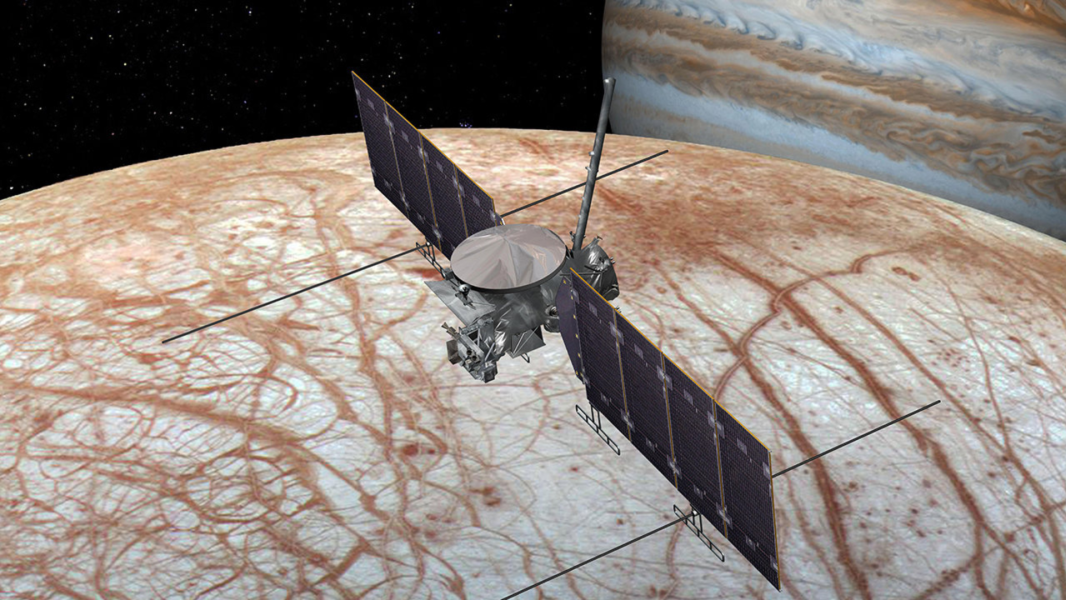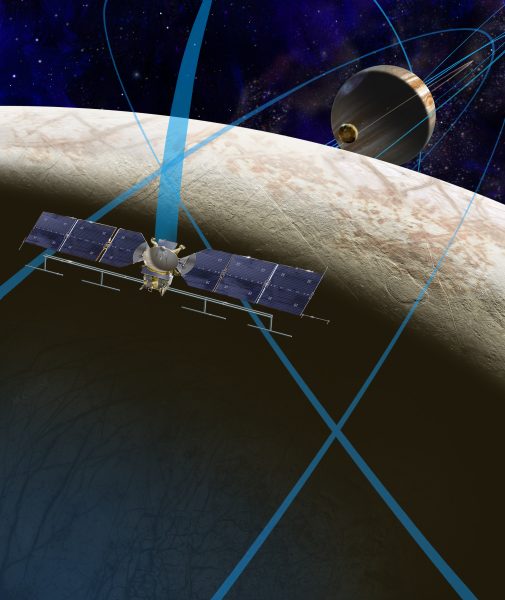Europa Clipper
Exploring Jupiter's icy moon for conditions suitable for life
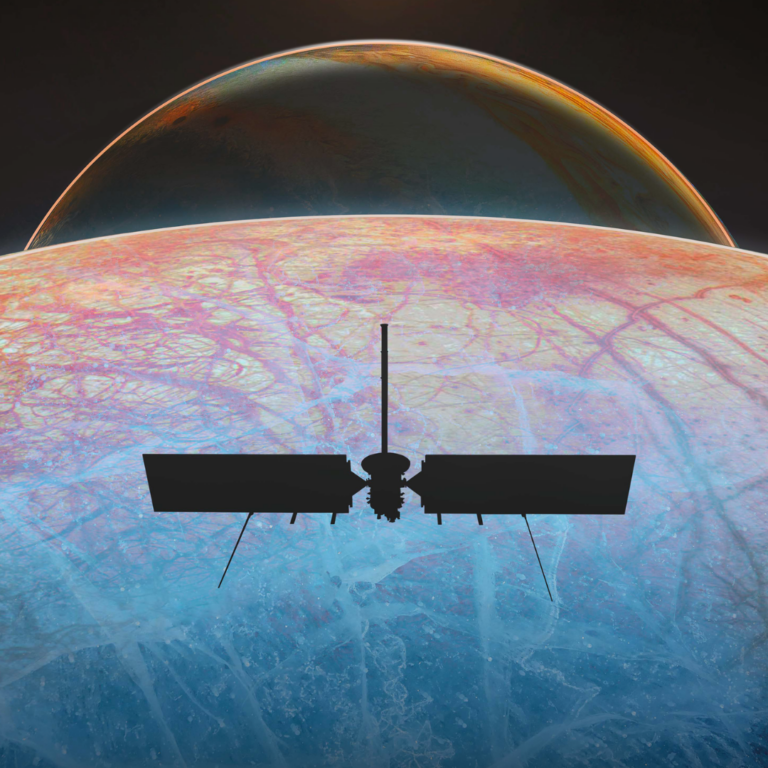
NASA’s Europa Clipper is a Flagship mission to study Jupiter’s moon Europa to investigate whether the moon could have conditions suitable for life. The orbiter will perform dozens of close flybys of Europa, gathering detailed measurements to determine whether there are places below Europa’s surface that could support life. Europa Clipper will orbit around Jupiter, and over its 4 year mission, it will make nearly 50 flybys of Europa. Its closest-approach will reach altitudes as low as 25 kilometers (16 miles) above the surface, zooming over a different location during each flyby to observe nearly the entire moon.
Watch live as Europa Clipper is built and tested in the Spacecraft Assembly Facility at NASA’s Jet Propulsion Laboratory (JPL) in Pasadena, California.
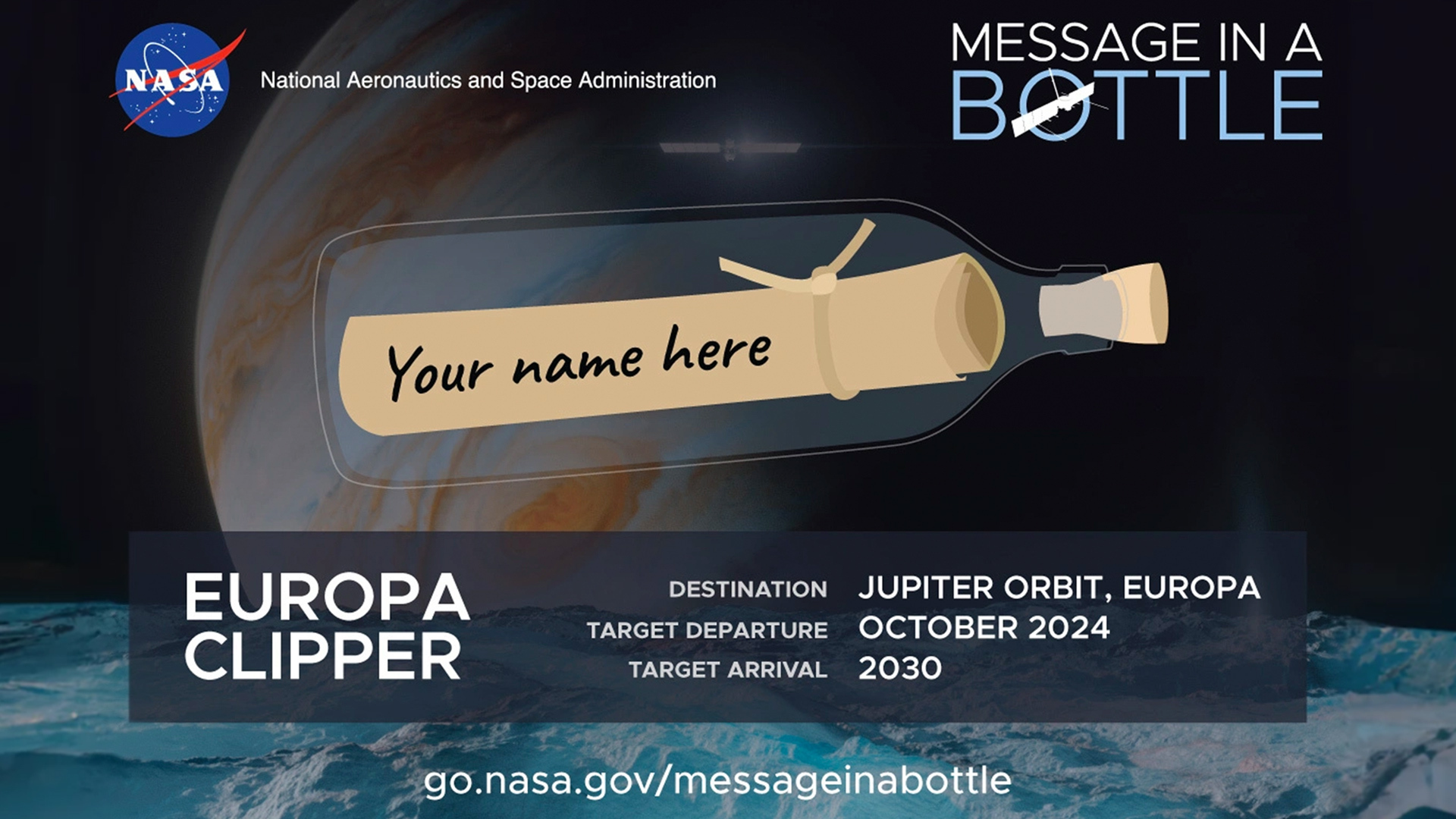
A year from now, when NASA launches its flagship mission Europa Clipper to search for conditions suitable for life on Jupiter’s icy moon Europa, the LASP-built Surface Dust Analyzer, will be on board! It will analyze dust ejected from the surface—which will provide insight into the watery ocean below.
You can join this mission and have your name engraved on the spacecraft, which will then travel 1.8 billion miles from Earth to Europa—like a “Message in a Bottle” from one ocean world to another. Visit https://europa.nasa.gov/message-in-a-bottle/sign-on/ to send your name today!
Mission Class:
Mission Status:
LASP Roles:
Science Target:
Mission Focus:
Primary Mission Site:

Launch Date: October 2024
Orbit Insertion: will arrive in 2030
Prime Mission: 4 years of science observations
Lead Institution: NASA Jet Propulsion Laboratory
Lead Funding Agency: NASA Science Mission Directorate
Partners: Johns Hopkins University Applied Physics Laboratory, NASA Marshall Space Flight Center, NASA Headquarters, University of Texas Austin, Arizona State University, Southwest Research Institute, University of Michigan, NASA Goddard Space Flight Center

